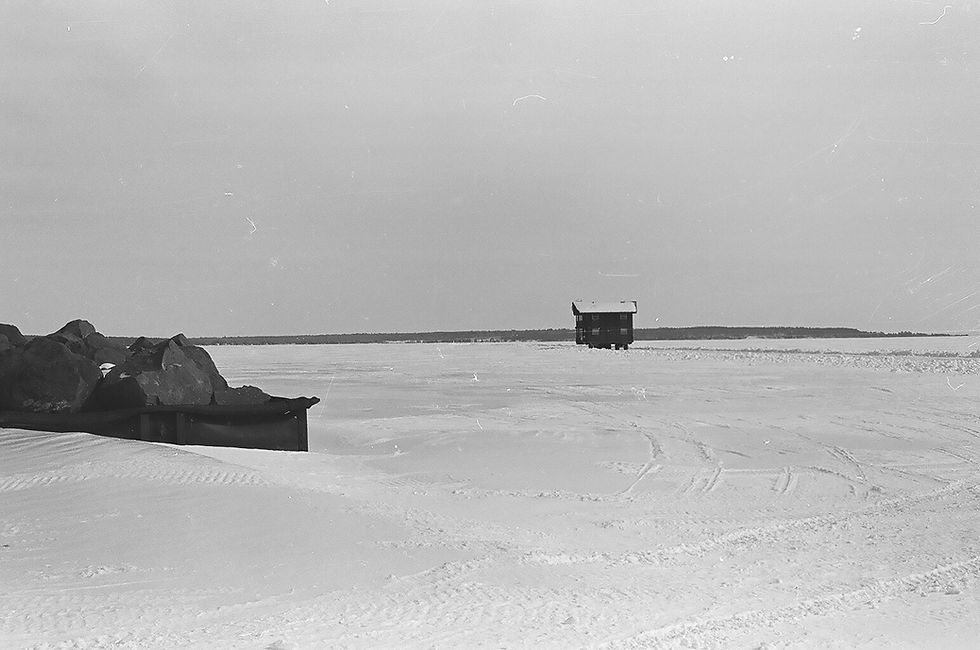Protecting the Owyhees and the politics of place
- rbarker773
- May 13, 2024
- 4 min read
Updated: Aug 28, 2024

I paddle down the East Fork of the Owyhee River
By Rocky Barker
Copyright 2024
Bruce Babbitt had invited me to fly on his jet to Arco, Idaho in 2000 to talk to ranchers about President Clinton’s plan to use the Antiquities Act of 1906 to expand the Craters of the Moon National Monument.
The monument’s volcanic lava flows from eruptions that occurred in the past 10,000 years cover hundreds of square miles of south-central Idaho, giving it the appearance of a lunar landscape. On May 2, 1924, Calvin Coolidge proclaimed Craters of the Moon a national monument using the Antiquities Act. The National Park Service managed the original 54,000-acre monument but Babbitt wanted to expand it to adjacent 700,000 acres, much of which was grazed by ranchers.
So he was flying to Arco to meet with the ranchers, show them his maps and find a way to get them to tolerate Clinton’s expansion if they weren’t going to support it. His 2000 approach at Craters and 22 other monuments designated in 2001 in the West was very different that his designation of the Staircase Escalante National Monument in southern Utah in 1996.
The southern Utah monument was kept very secret until just before Clinton made the announcement, in a campaign event in Arizona. Utah Republicans and their rural constituents were livid they had been left out of the process. Babbitt, a former Arizona governor, made sure he gave everyone a chance to express their view before the 22 monuments sat the end of Clinton’s term, including Craters’ expansion, were finalized.
On the plane ride back to Boise Babbitt told me he was considering adding the Owyhee Canyonlands at the southwest corner of the state to his list of monuments. He asked me if I thought he had time to put together the kind of public process including hearings he had done at Craters. Conservation and preservation groups had been pushing the administration hard to include the desolate, 4,500 square miles of sagebrush steppe highlands and deep chasms into the national monument system.
But it was late in the year and I had just attended a meeting organized by the feisty Sagebrush Rebel Congresswoman Helen Chenoweth. Dozens of ranchers expressed their anger at lawsuits filed by the group Western Watersheds, head by a Hailey Architect Jon Marvel. I told Babbitt he would face a firestorm of protest if he were to move forward in the Owyhees even though they are clearly deserved protection.
When Craters was expanded in November of 2000, Clinton said in his proclamation that he had considered the Owyhee Canyonlands but did not have the time to add the area to his new list of monuments. But he said it clearly qualified.
Owyhee County’s commissioners, mostly ranchers themselves, could see the writing on the wall. If they waited around until another Democratic administration was elected, the future of the management of the public lands that made up the overwhelming majority of the county would be taken out of their hands. With Republican George W. Bush in the White House and an entirely Republican Congressional delegation, this was the time for them to move. They sent a letter to every member of the congressional delegation asking them to take the lead in legislation that would preserve their ranching lifestyle and industry while designating wilderness on their terms. Only Sen. Mike Crapo replied.
Daniel Kemmis, Missoula's former mayor, seemed like a liberal Democrat from a college town. Once the Democratic speaker of the Montana House, the Harvard-educated Montana native, with his wavy white hair and tweed coats, looked more like a college professor than a ward-heeling politician.
But Kemmis became one of the main voices of what used to be considered a Republican mainstay value, local control. Kemmis, used his experience growing up in rural Montana to develop a new model to challenge the bureaucratic, command-and-control government that has evolved in the nation and especially the American West. Kemmis the American system created an adversarial barrier between decision makers and the people. Over the years, the system encouraged people to disengage themselves from the decision making, increase their reliance on their leaders to make the decisions for them. Then, when those decisions didn’t meet their needs and desires, the public's contempt for the system grew and they become even more disengaged.
He laid out a new vision to create a society in the West to match its scenery as Stegner suggested, in his 1990 book: Community and the Politics of Place. The basic idea was to get people from different ideologies and positions involved in an issue to come to a table and a consensus solution instead of going to a public hearing and commenting on a government formulated plan.
Crapo, who had embraced Daniel Kemmis’ collaborative model, shared the same vision. He agreed to oversee what became known as the Owyhee Initiative, Here ranchers, local officials, conservation groups including the Wilderness Society, the Nature Conservancy and the Idaho Conservation League, outfitters and motorized recreationists worked for 10 years to craft a bill that protected 517, 000 acres of wilderness and a series of actions to help local ranchers in 2009.
But the power of the collaborative went beyond the passage of the law and the signing of President Obama. Long after the bill became law the ranchers and preservationists remained together, standing against their own allies’ efforts to divide.




Comments